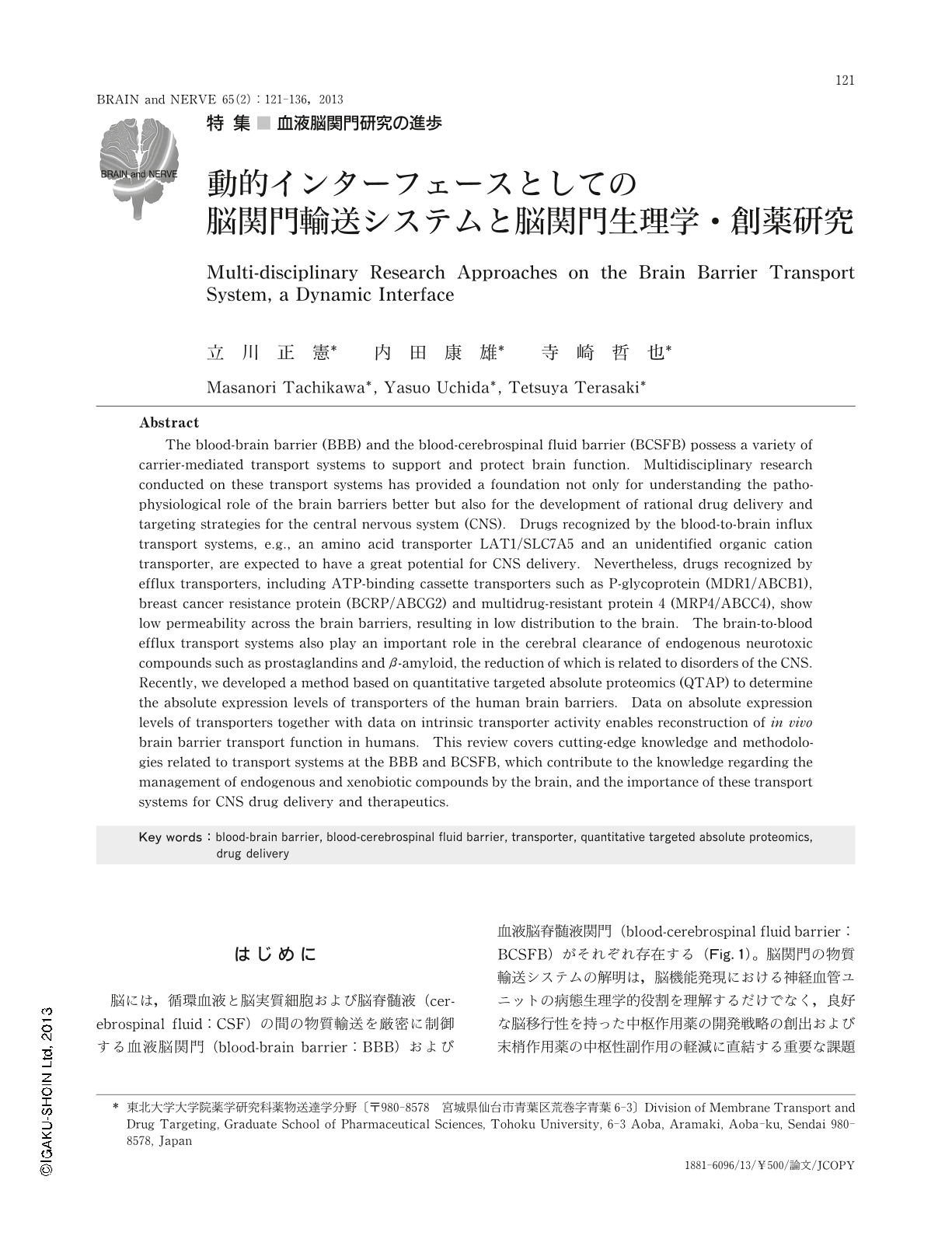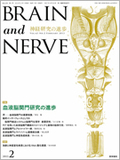Japanese
English
- 有料閲覧
- Abstract 文献概要
- 1ページ目 Look Inside
- 参考文献 Reference
はじめに
脳には,循環血液と脳実質細胞および脳脊髄液(cerebrospinal fluid:CSF)の間の物質輸送を厳密に制御する血液脳関門(blood-brain barrier:BBB)および血液脳脊髄液関門(blood-cerebrospinal fluid barrier:BCSFB)がそれぞれ存在する(Fig.1)。脳関門の物質輸送システムの解明は,脳機能発現における神経血管ユニットの病態生理学的役割を理解するだけでなく,良好な脳移行性を持った中枢作用薬の開発戦略の創出および末梢作用薬の中枢性副作用の軽減に直結する重要な課題である。具体的な課題としては,①アミノ酸などの低分子から,ペプチド/蛋白質などの高分子に至る物質輸送機構を,分子レベルで定量的に解明する,②それらの制御機構を分子レベルで解明する,③ヒトにおける脳関門輸送を評価する,などが挙げられる。本稿では,筆者らの最新データを含めたこれまでの研究成果を中心に取り上げ,脳関門輸送研究の進歩とそのゆくえについて概説する。
Abstract
The blood-brain barrier (BBB) and the blood-cerebrospinal fluid barrier (BCSFB) possess a variety of carrier-mediated transport systems to support and protect brain function. Multidisciplinary research conducted on these transport systems has provided a foundation not only for understanding the pathophysiological role of the brain barriers better but also for the development of rational drug delivery and targeting strategies for the central nervous system (CNS). Drugs recognized by the blood-to-brain influx transport systems, e.g., an amino acid transporter LAT1/SLC7A5 and an unidentified organic cation transporter, are expected to have a great potential for CNS delivery. Nevertheless, drugs recognized by efflux transporters, including ATP-binding cassette transporters such as P-glycoprotein (MDR1/ABCB1), breast cancer resistance protein (BCRP/ABCG2) and multidrug-resistant protein 4 (MRP4/ABCC4), show low permeability across the brain barriers, resulting in low distribution to the brain. The brain-to-blood efflux transport systems also play an important role in the cerebral clearance of endogenous neurotoxic compounds such as prostaglandins and β-amyloid, the reduction of which is related to disorders of the CNS. Recently, we developed a method based on quantitative targeted absolute proteomics (QTAP) to determine the absolute expression levels of transporters of the human brain barriers. Data on absolute expression levels of transporters together with data on intrinsic transporter activity enables reconstruction of in vivo brain barrier transport function in humans. This review covers cutting-edge knowledge and methodologies related to transport systems at the BBB and BCSFB, which contribute to the knowledge regarding the management of endogenous and xenobiotic compounds by the brain, and the importance of these transport systems for CNS drug delivery and therapeutics.

Copyright © 2013, Igaku-Shoin Ltd. All rights reserved.


